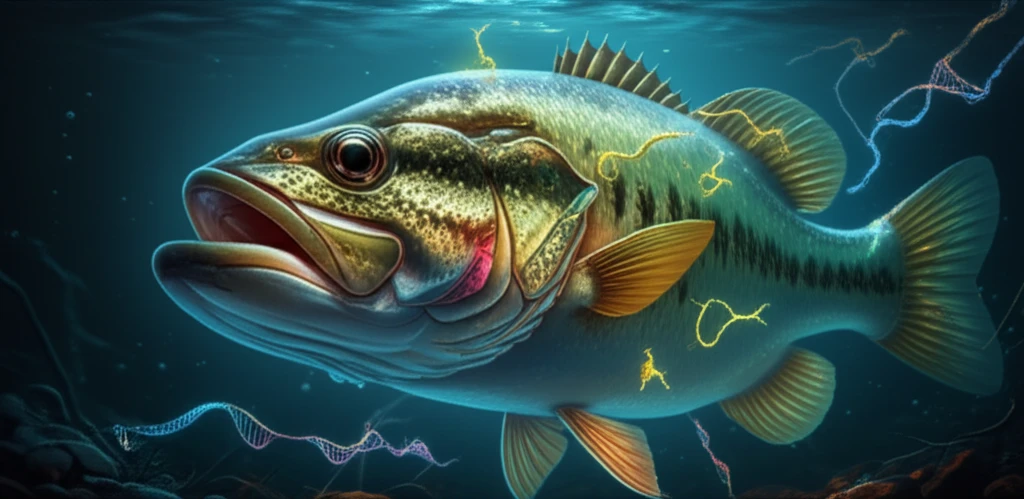
Parasites Unveiled: The Largemouth Bass's Hidden Stowaways and What They Tell Us
"Dive into the microscopic world of largemouth bass parasites, exploring how these tiny organisms impact fish health and reveal broader ecological insights."
Imagine a world teeming with unseen life, where microscopic creatures hitchhike on larger hosts, shaping their health and influencing entire ecosystems. This is the reality for many freshwater fish, including the popular largemouth bass (Micropterus salmoides). These fish play host to a variety of parasites, including a group of spiny-headed worms known as acanthocephalans.
Acanthocephalans, particularly those belonging to the genus Neoechinorhynchus, are common parasites found in freshwater fishes, brackish water fishes, and even freshwater turtles around the globe. In North America alone, over 30 species of Neoechinorhynchus have been identified. One notable species, Neoechinorhynchus cylindratus, is frequently found in centrarchid fishes, a family that includes the largemouth bass.
Recent research has focused on understanding the characteristics and genetic makeup of Neoechinorhynchus cylindratus populations in northern Mexico. By analyzing the DNA of these parasites, scientists are gaining valuable insights into their relationships, distribution, and potential impact on their hosts. This article delves into the fascinating world of these microscopic stowaways, exploring how their study can reveal broader ecological and evolutionary patterns.
Decoding the DNA: What Molecular Analysis Reveals About Fish Parasites

Scientists collected adult Neoechinorhynchus cylindratus specimens from largemouth bass in the Purificación River in northern Mexico. In the same area, they also collected two other related species, Neoechinorhynchus emyditoides and Neoechinorhynchus panucensis, from different host species. The researchers then extracted DNA from these parasites and analyzed specific regions, including the large subunit ribosomal DNA (LSU), internal transcribed spacers (ITS1 and ITS2), and the cytochrome c oxidase subunit I (cox1) gene.
- Unexpected Relationships: The three Neoechinorhynchus species found in the Purificación River (N. cylindratus, N. emyditoides, and N. panucensis) did not appear to share a recent common ancestor, suggesting they might have different origins.
- Paraphyletic Genus: The genus Neoechinorhynchus, as currently defined, might not accurately reflect the evolutionary relationships between its members. This means that some species within the genus are more closely related to species outside the genus than they are to other Neoechinorhynchus species.
- Need for Revision: The study highlights the need for a taxonomic revision of the Neoechinorhynchus genus, incorporating both molecular data and traditional morphological and ecological information.
Why Study Fish Parasites?
While parasites might seem like unpleasant creatures, they play a crucial role in ecosystems. Studying fish parasites like Neoechinorhynchus cylindratus can provide valuable insights into: <ul> <li><b>Fish Health:</b> The presence and abundance of parasites can indicate the overall health of fish populations and the aquatic environment.</li> <li><b>Biodiversity:</b> Parasites contribute to the overall biodiversity of an ecosystem, and understanding their diversity is essential for conservation efforts.</li> <li><b>Environmental Change:</b> Parasites can be sensitive to environmental changes, making them useful indicators of pollution, habitat degradation, and climate change.</li> </ul> By continuing to investigate these microscopic stowaways, we can gain a deeper understanding of the complex interactions within aquatic ecosystems and better protect these valuable resources.
